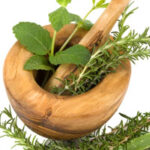 Dr. Roger Bayard from The University of Adelaide, in Australia tells us “Traditional herbal substances may contain highly toxic chemicals and heavy metals.”
Dr. Roger Bayard from The University of Adelaide, in Australia tells us “Traditional herbal substances may contain highly toxic chemicals and heavy metals.”
Then, he goes on to catalog all the ways this can happen.
Here are the reasons for dangerous ingredients being in herbals.
- Deliberate
- Heavy metals
- Organic toxins
- Cost cutting
- Inadvertent
- Pesticides and herbicides
- Chemicals
- Heavy metals
- Microorganisms and insects
- Mycotoxins (toxin produced by a fungus)
- Drug adulteration
- Deliberate
- Prescription drugs
- Substituted herbs
- Inadvertent
- Mistaken identification
- Inadequate processing
Dr. Bayard offers examples.
- Toxic ingredients
- Analysis of 251 Asian herbal products from stores in California identified arsenic in 36, mercury in 35, and lead in 24.
- Substituted ingredients
- In 1 report, the substitute herb contained a nephrotoxin — aristolochic acid — which resulted in renal failure.
- Urinary tract neoplasia (tumor) in the form of carcinoma in situ (an early form of cancer) was found in 40% of cases of so-called Chinese-herb kidney disease.
- Accidental contamination
- Inadvertent heavy metal contamination was reported due to herbs in contaminated environments or from faulty storage.
- Contamination may occur with microorganisms, mycotoxins (a toxin produced by a fungus), insects, or herbicides from incorrect or erroneous treatments during storage.
- Adulteration
- Standard drugs have been found in as many as 24% of preparations from Taiwan.
- Issues with surgery
- 8 herbs were identified as being potentially dangerous following surgery in 1 review, but they accounted for 50% of all single herb preparations among the 1500 to 1800 herbal medicines sold in the US.
The bottom line?
ConsumerLab.com has documented the high frequency in which supplements fail to contain the ingredients and amounts listed on the label.
In absence of FDA or reliable manufacturers’ oversight, when taking herbals, caveat emptor.
2/10/10 21:22 JR